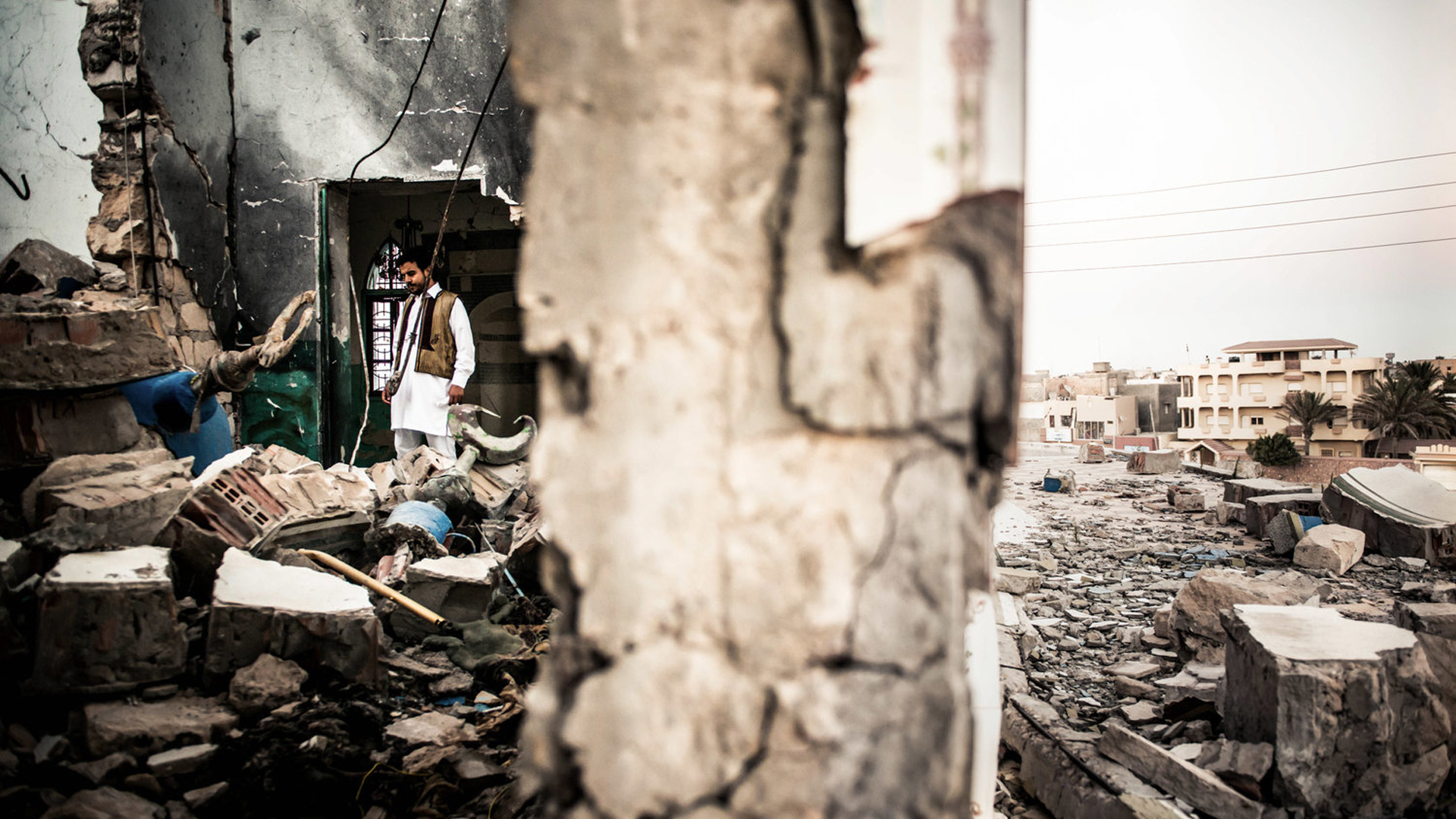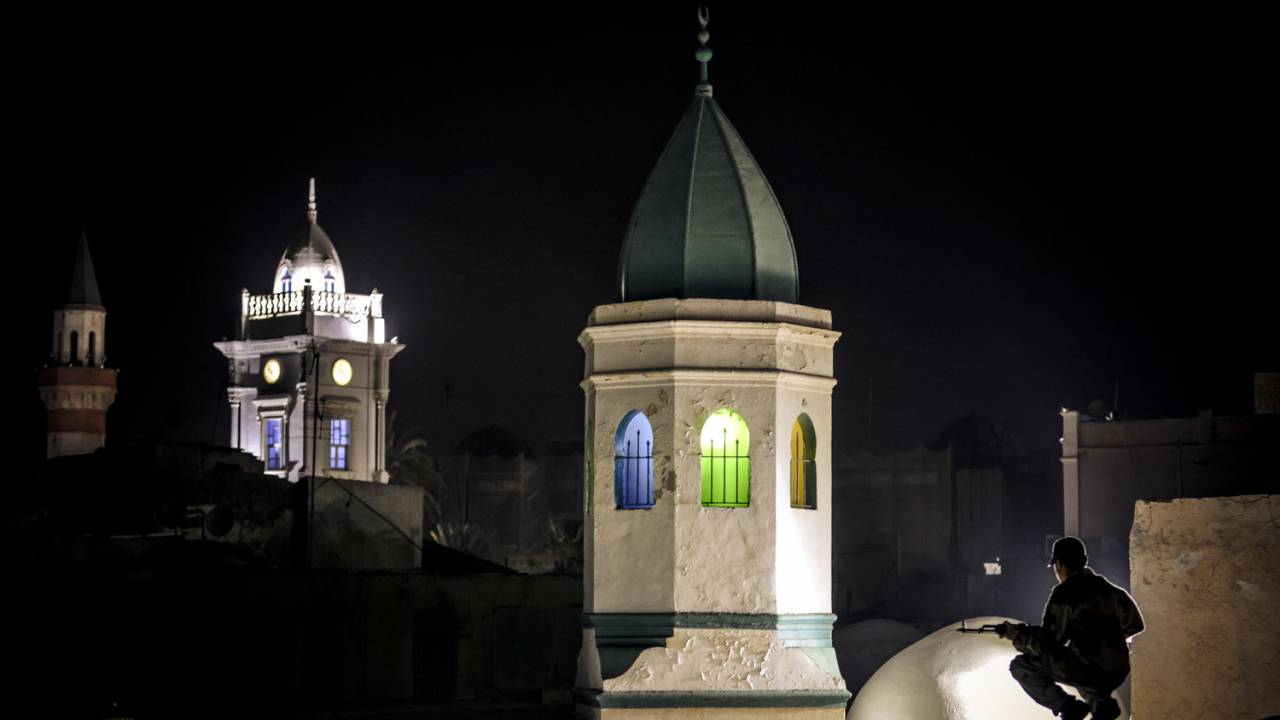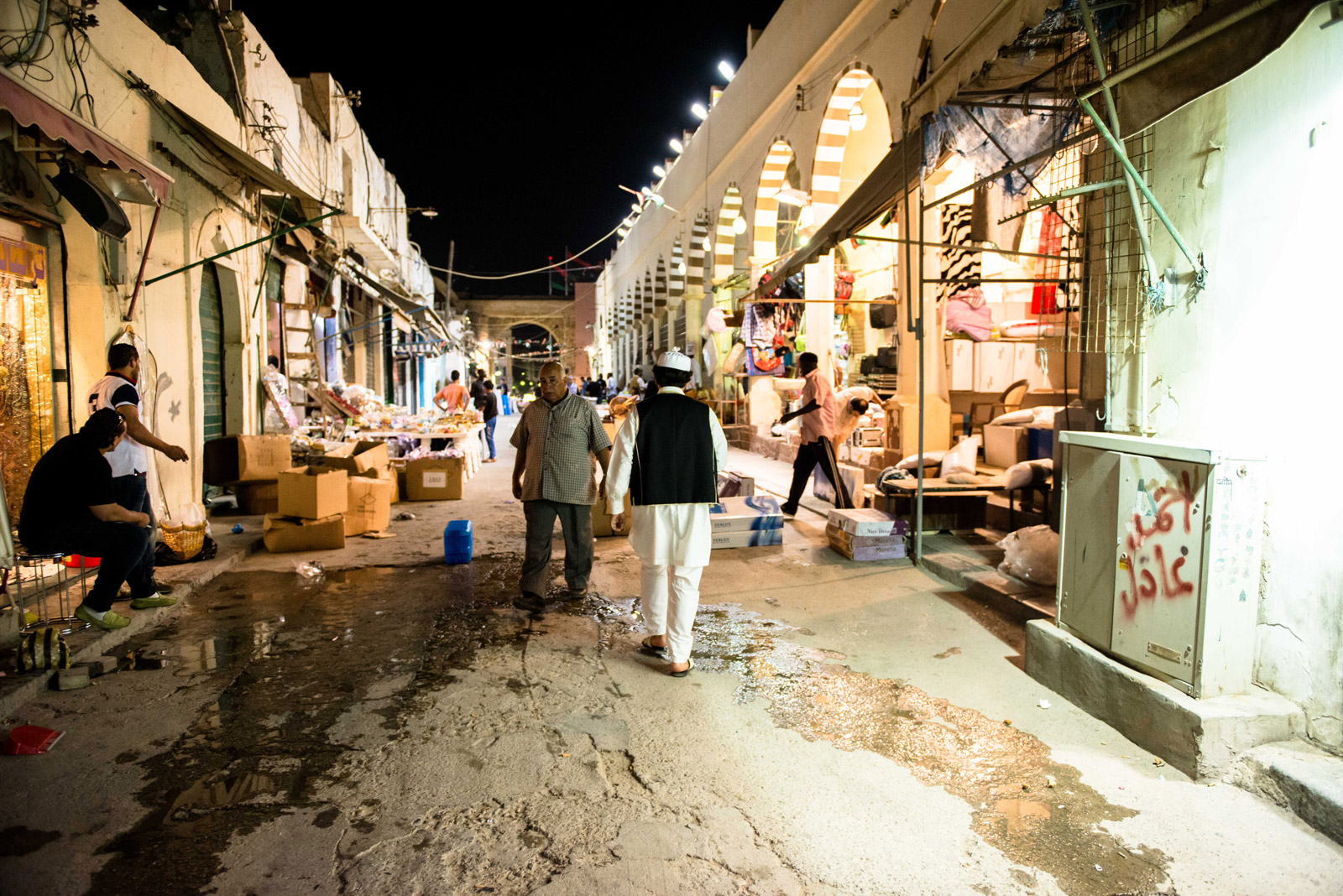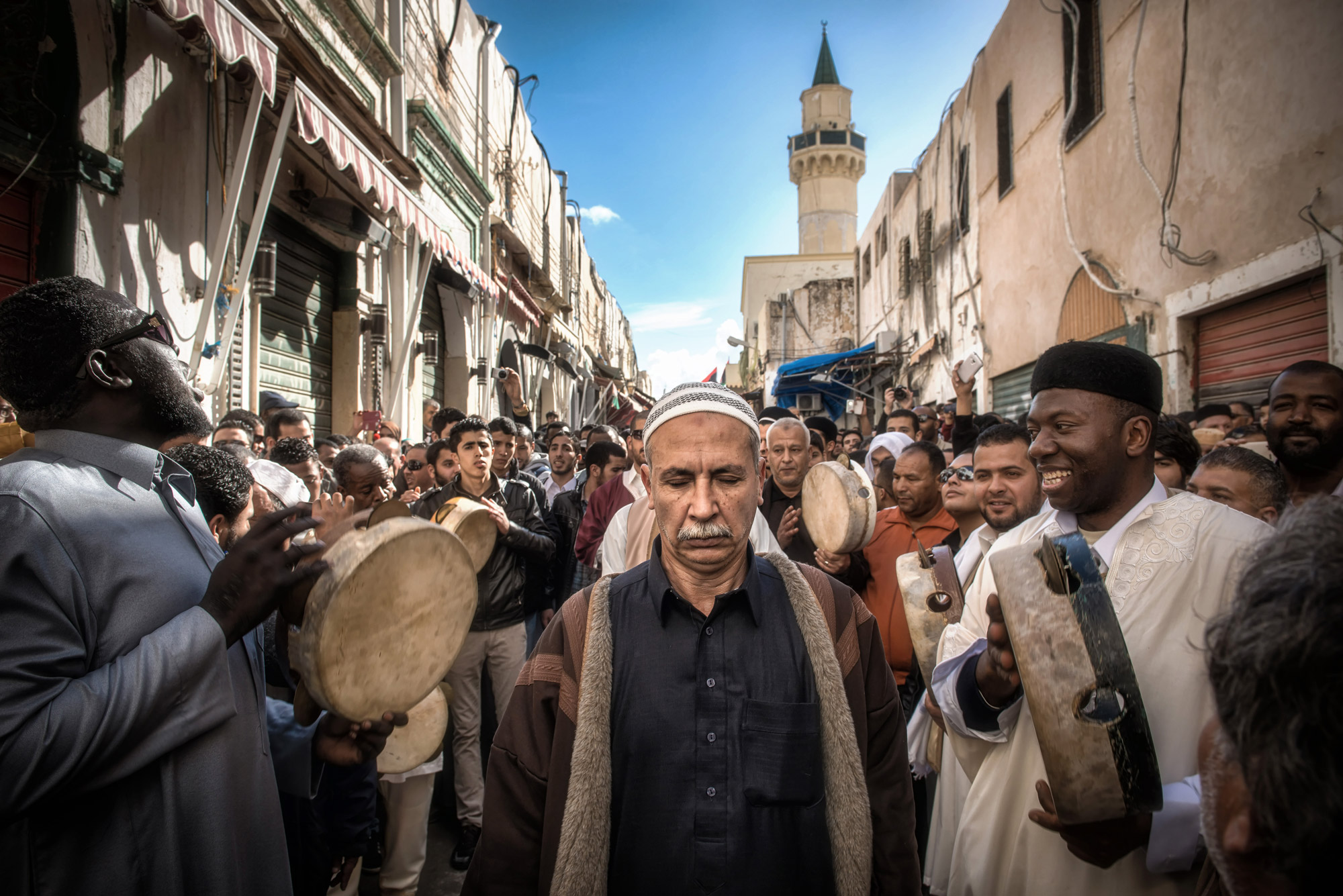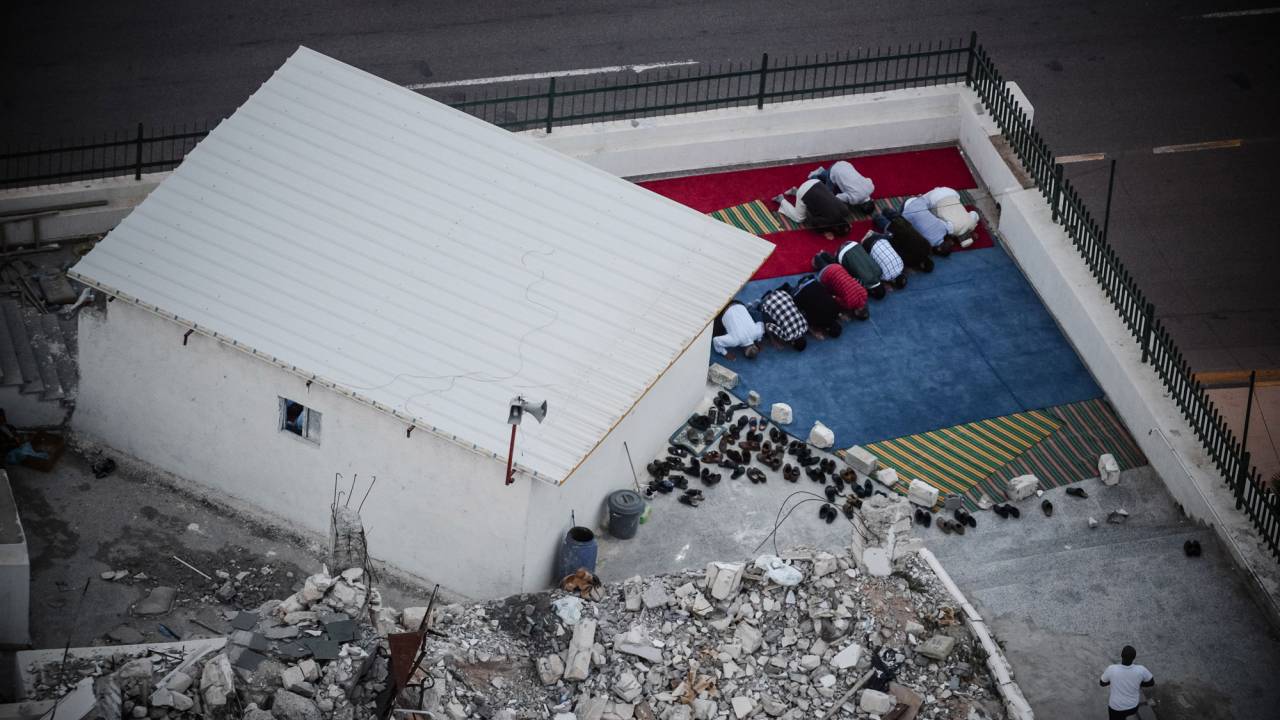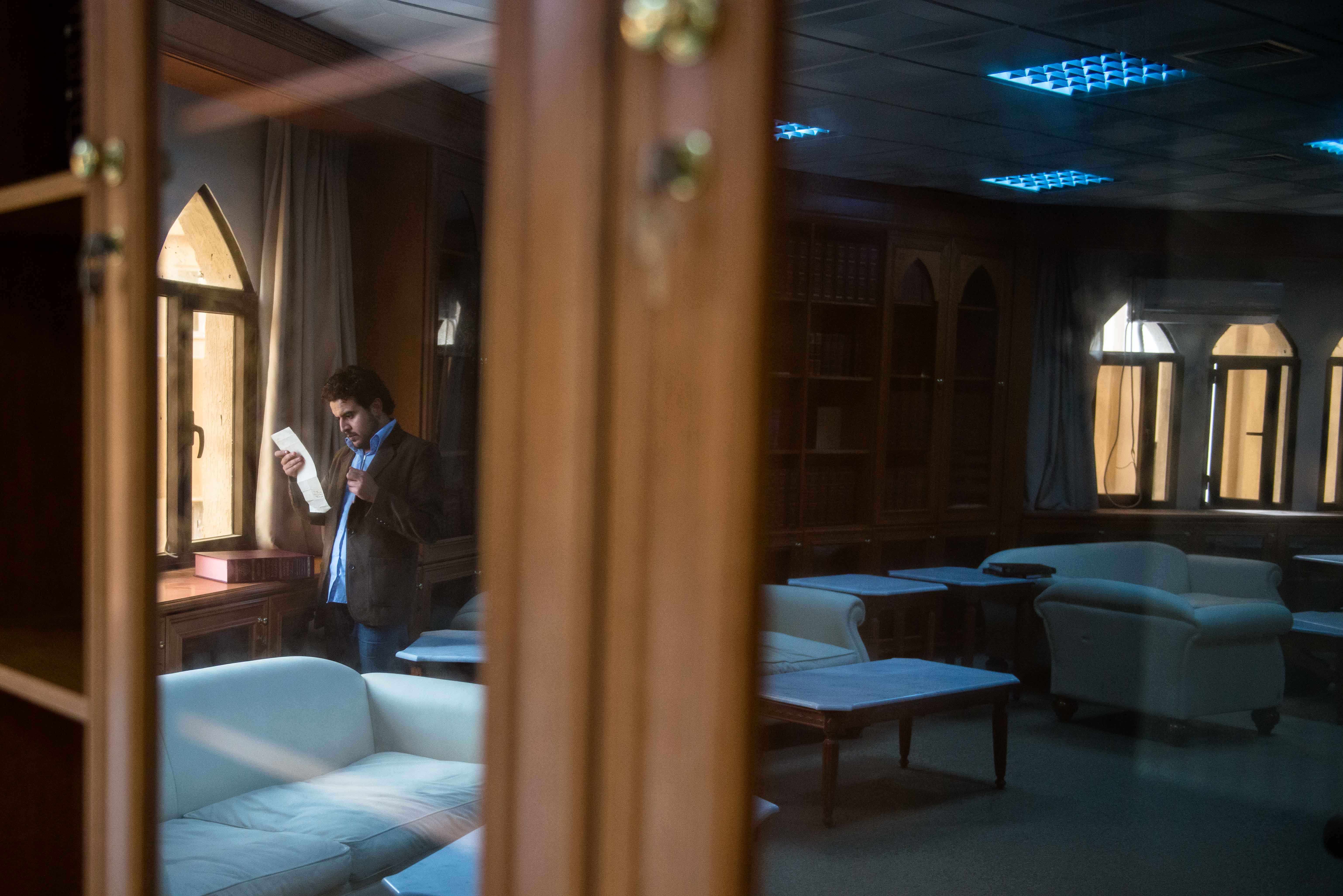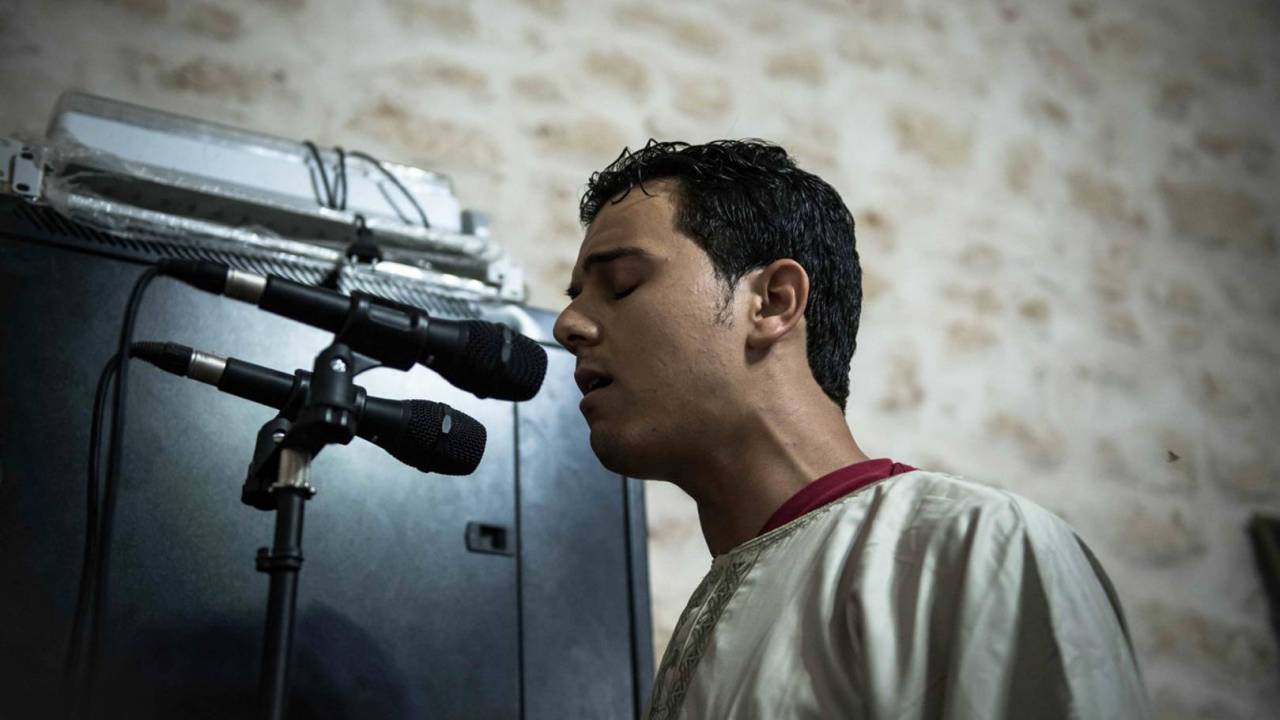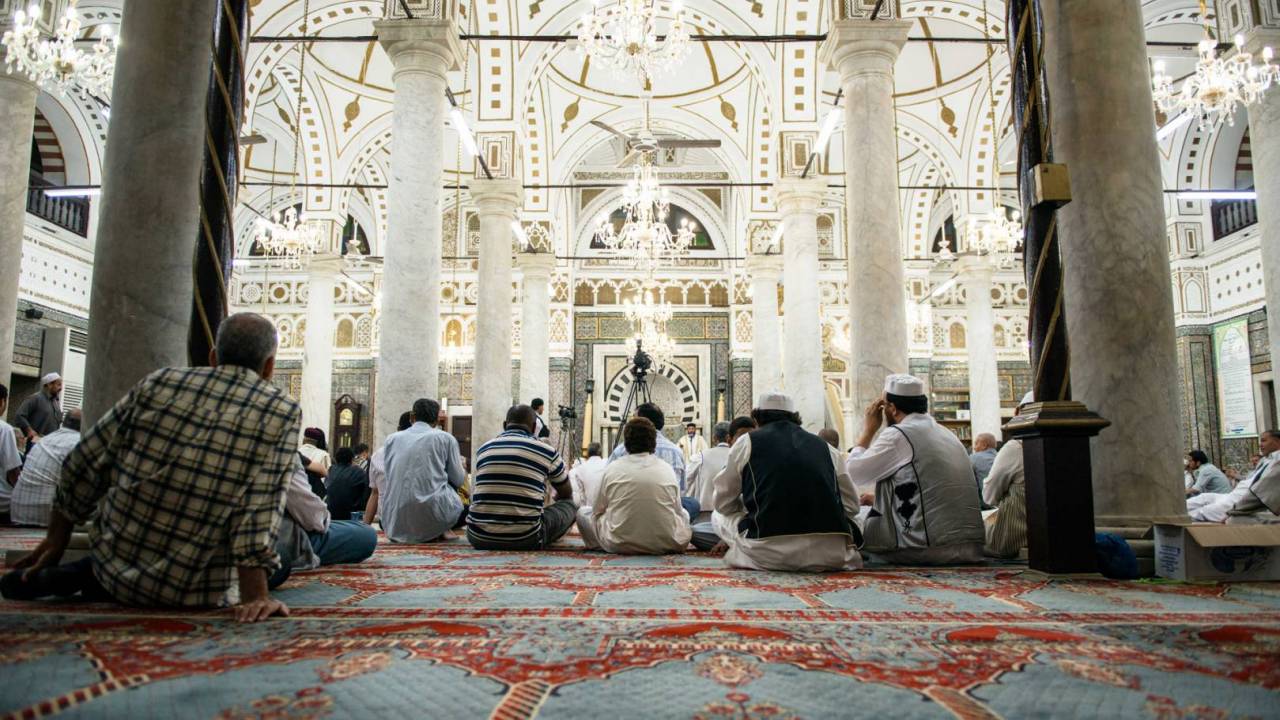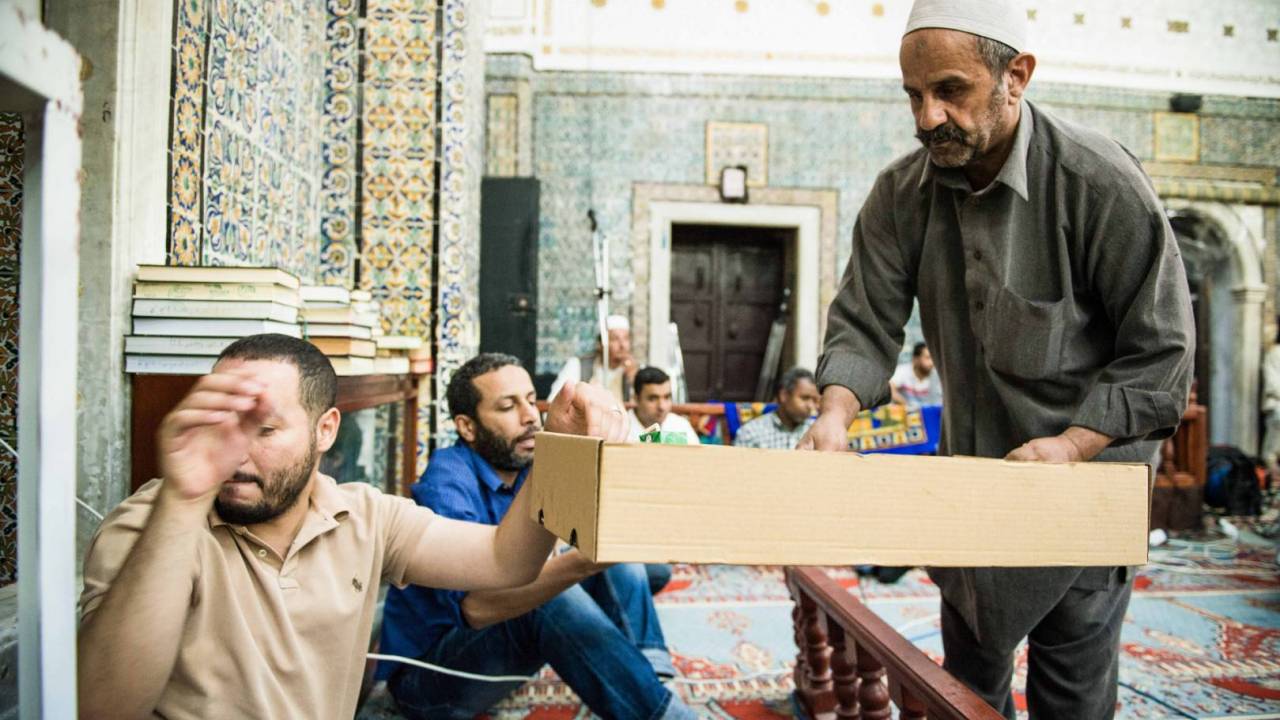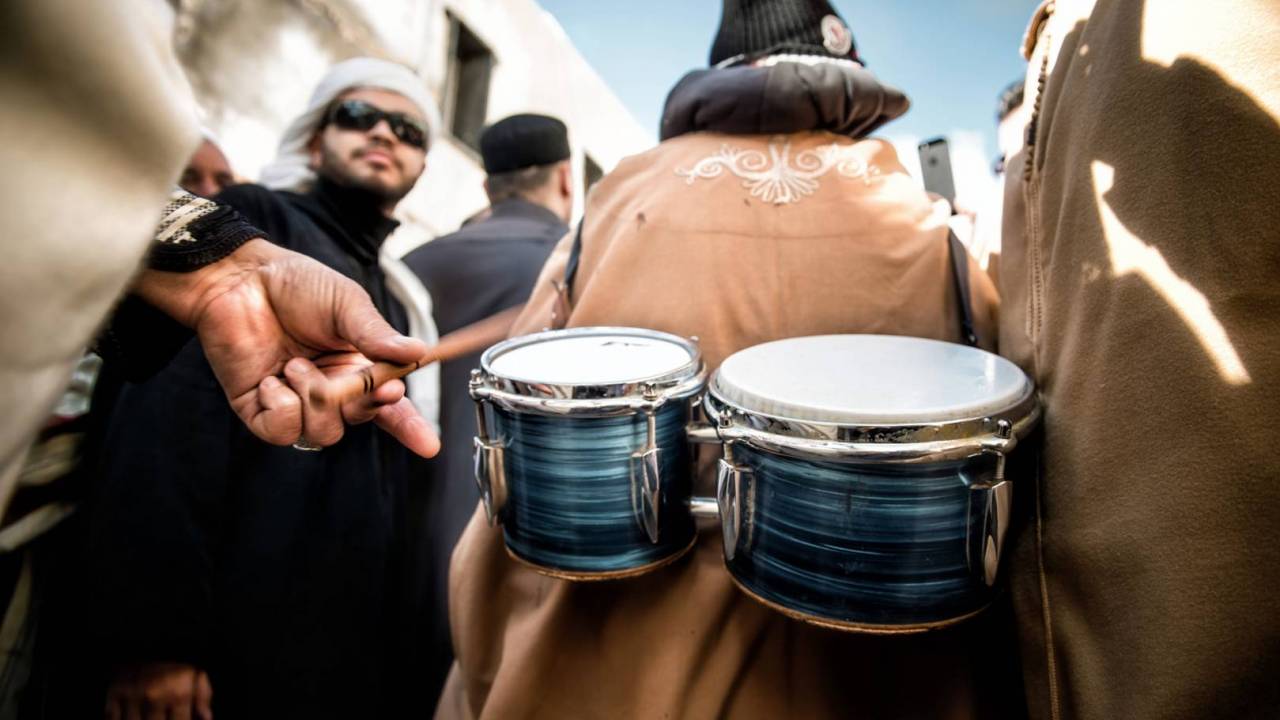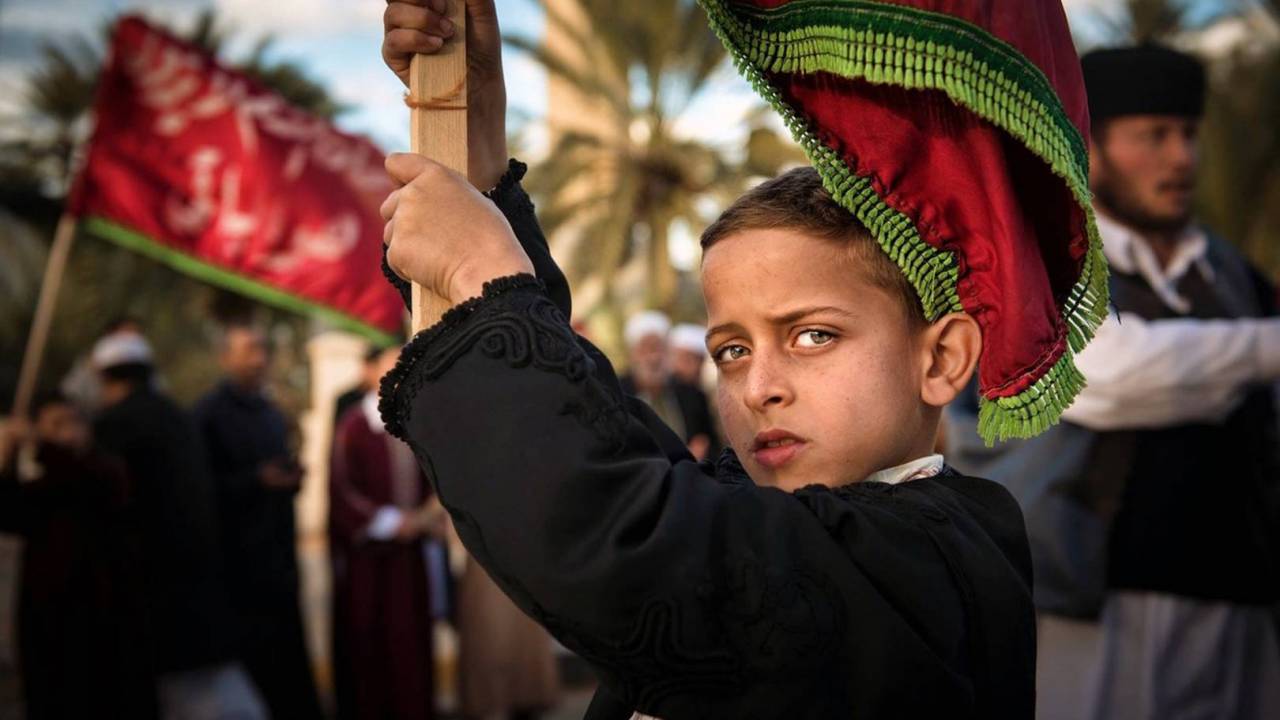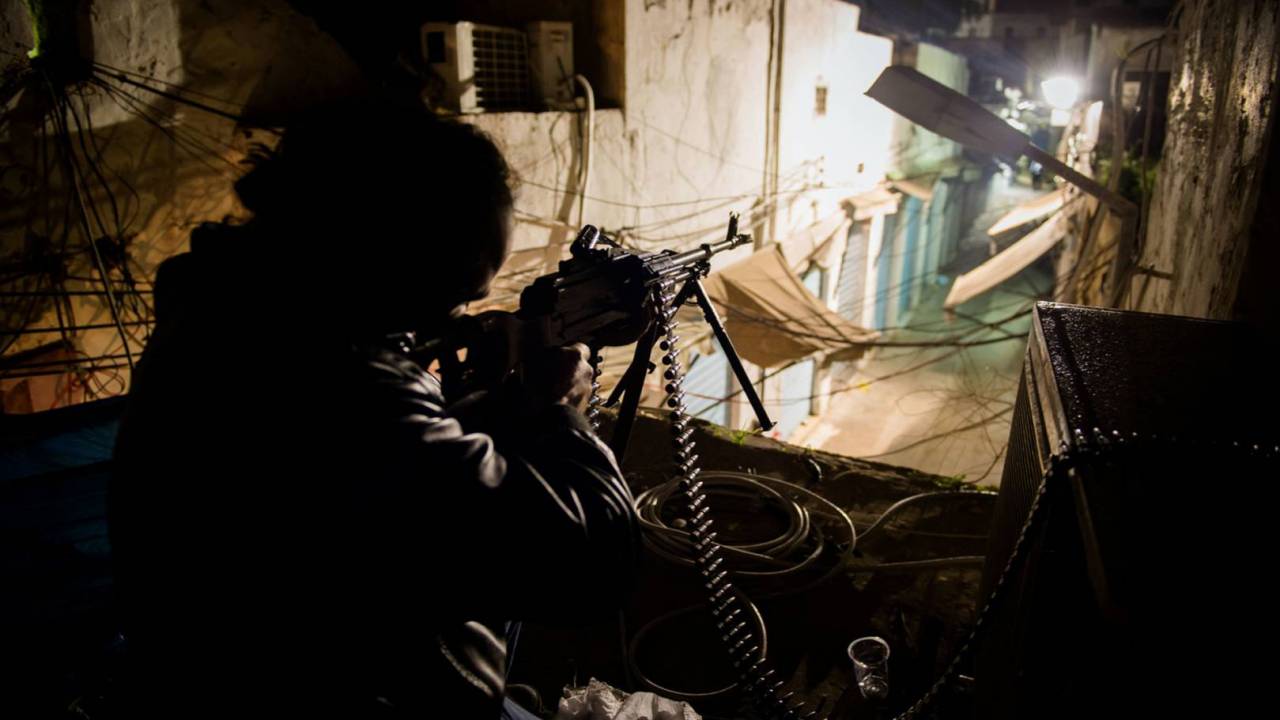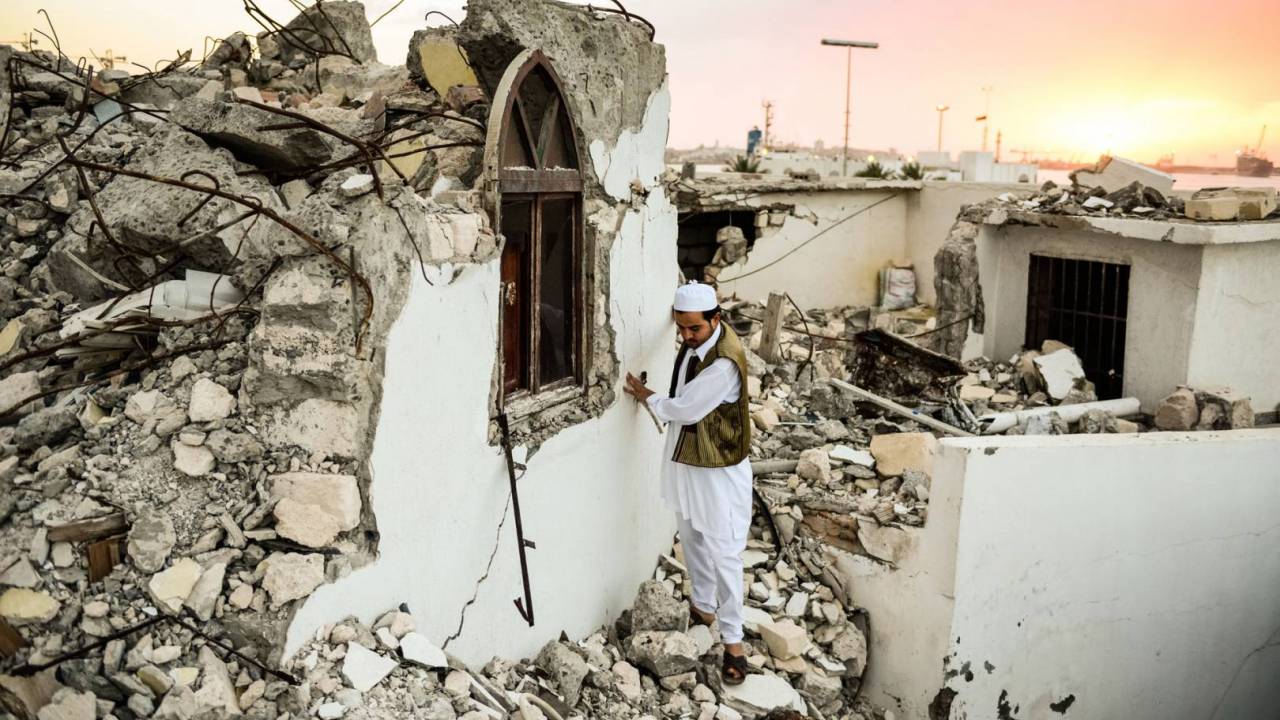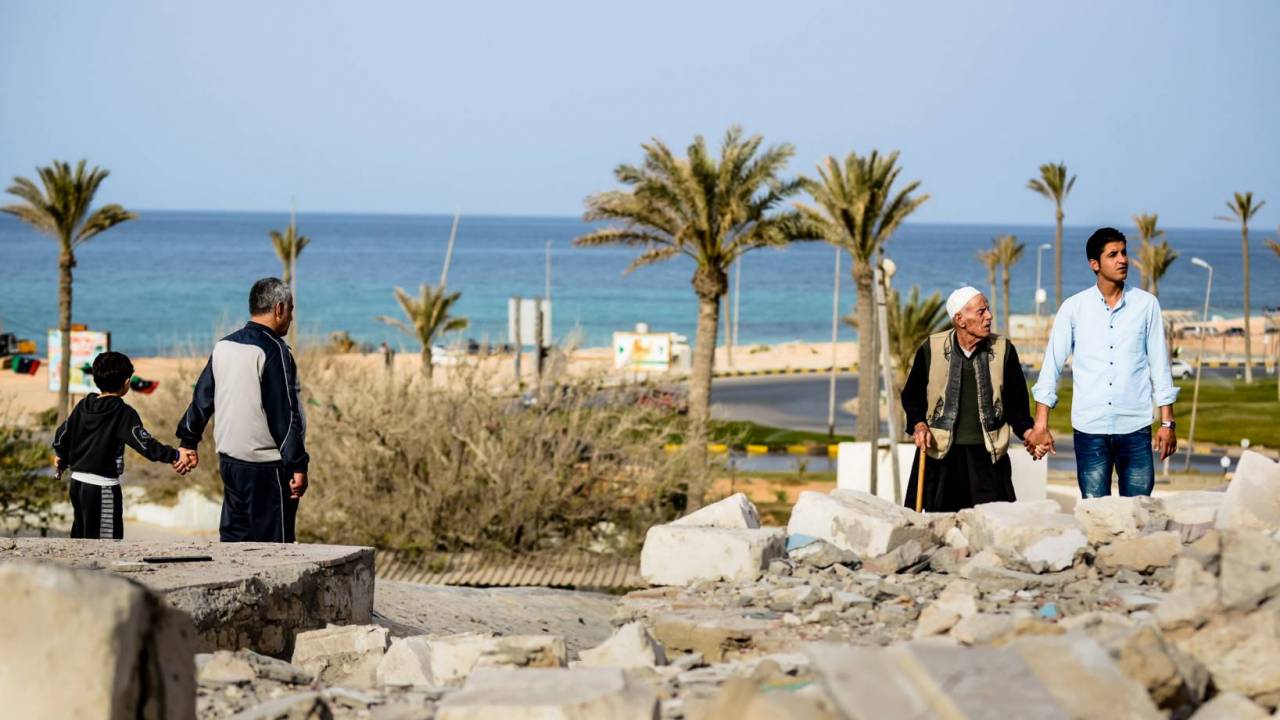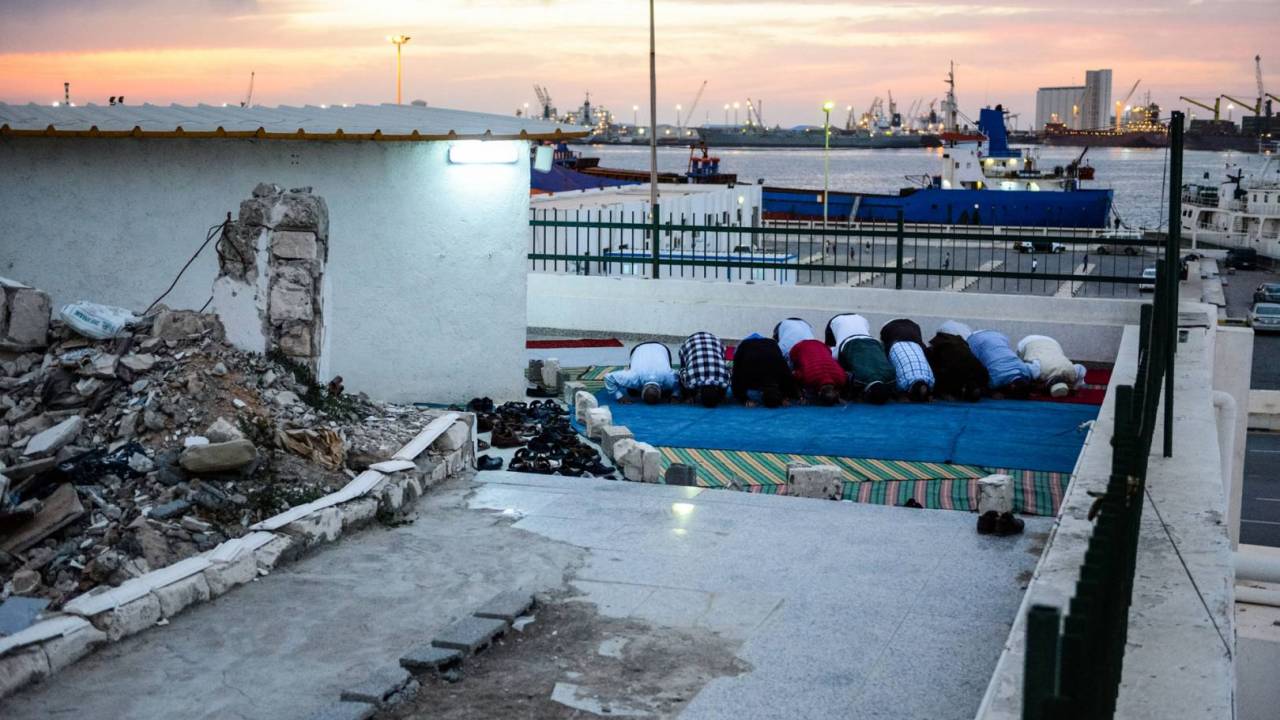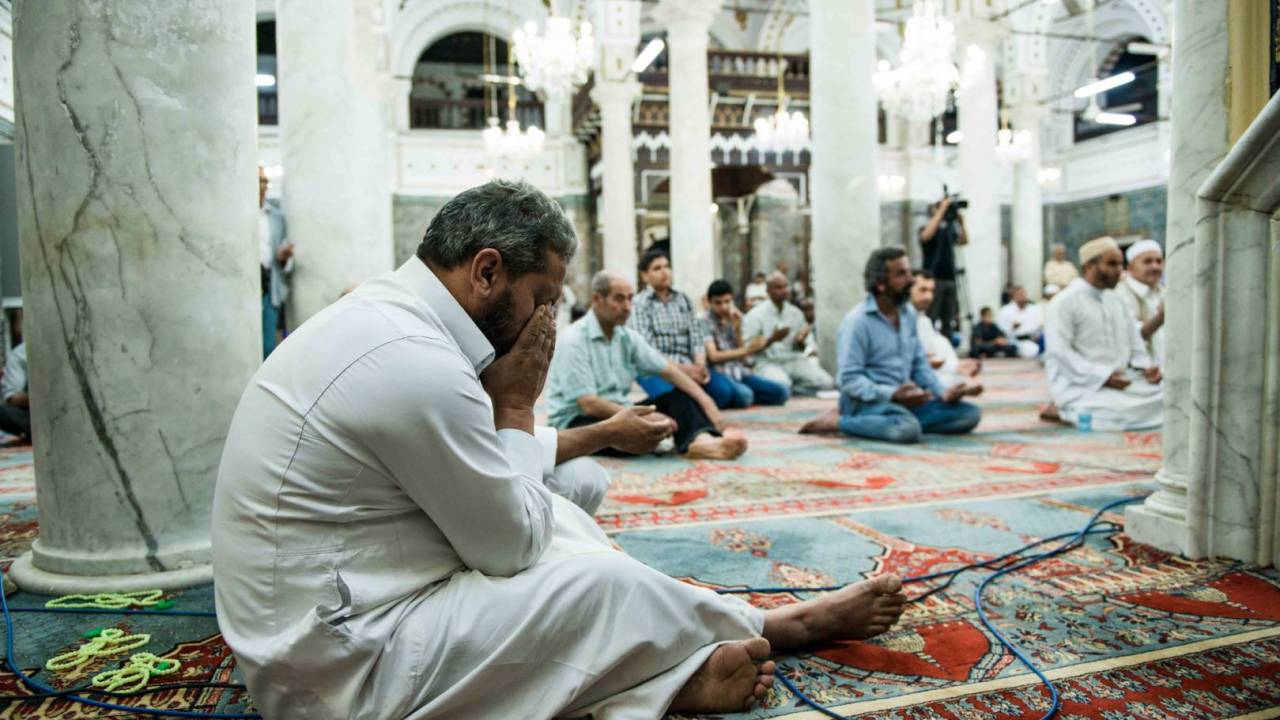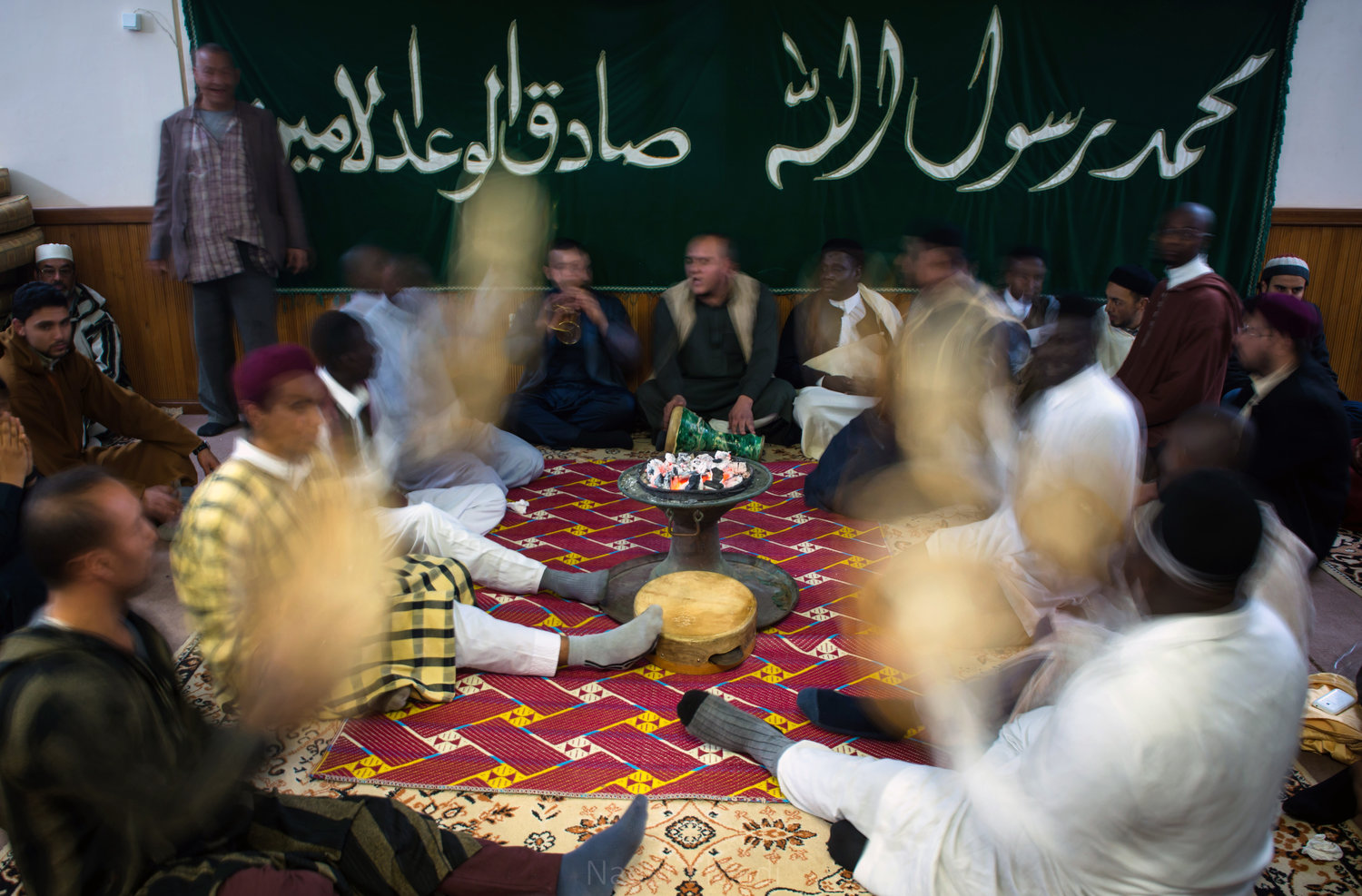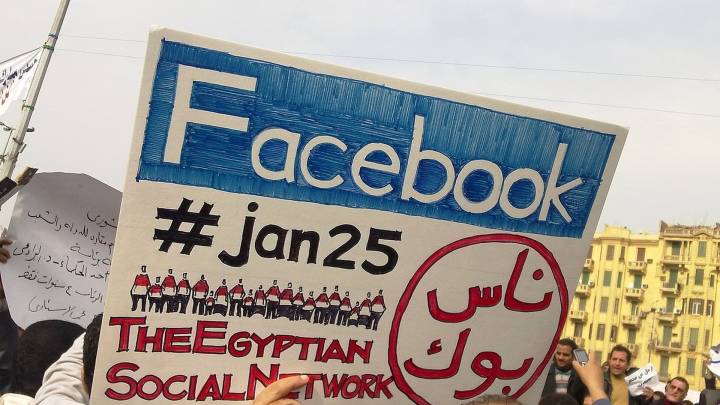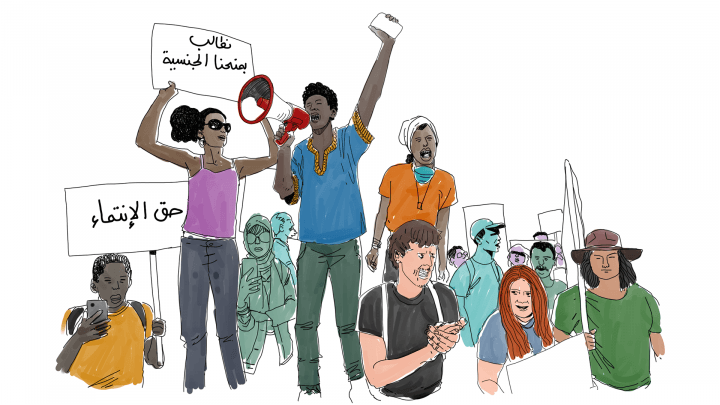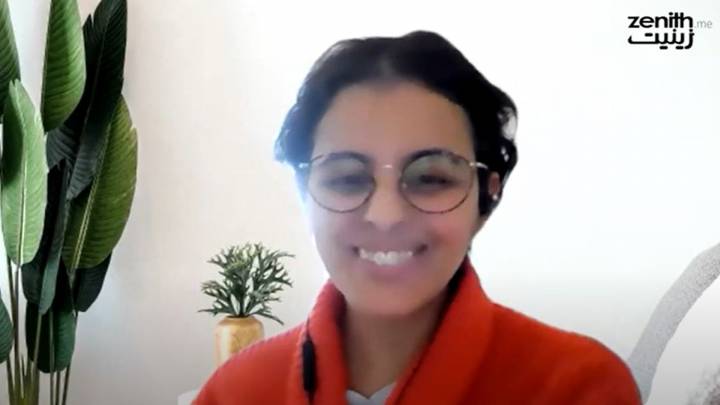Photographer Nader Elgadi followed the travails of the Sufi population in and around Tripoli after the fall of the Gaddafi regime.
It was a cold and quiet Tripoli evening in January 2013, almost two years after the fall of Muammar Gaddafi. Fireworks exploded in the sky, shopkeepers rolled down metal shutters on their shops to go home. As I approached the mosque, I could hear snatches from the group Madah – poems in praise of the Prophet – from inside, and the sounds of children playing in the yard.
But the atmosphere was tense, like the calm before a storm. Armed men walked the streets and were stationed on the rooftops. It felt like a war was coming. The spiritual mood of the old city of Tripoli had changed.
For the first time in decades, Sufis were celebrating Mawlid – the Prophet Mohammad’s birthday – under a cloud of fear and threat. In the post-revolution security vacuum, militant groups were targeting Sufis and their places of workshop.
As a photographer, I decided that the situation of the Sufis in Libya and the erasure of their heritage was a crucial story to cover. I met up with Abubaker, an old friend and activist, and followed him to Sufi celebrations and to the ruined shrines.
By then, many Sufi figures had already fled the country. People were scared just to carry around books in case that identified them as Sufi, or to go through airports where they might be recognised, Abubaker said.
Abubaker too was receiving frequent threats from extremists, though he didn’t identify as a Sufi, rather as a Libyan interested in his heritage and history who wished to show the tolerant version of Islam that had existed in Libya for years. He told me he felt powerless but also fearless; he regarded the unfolding attacks as shameful and cowardly.
Growing up in Tajoura, the eastern district of Tripoli where people of Andalusian, Turkish Arab and Amazigh heritage mix, I spent my summers going to a Quranic school (zawiya), where I first met Abubaker.
We met again in secondary school, where he was a bright but quiet student studying history and poetry. Despite having top grades in science and maths, Abubaker was the only one in the class to choose Sharia studies and law, rather than the engineering or science most favoured.
His interest came from his father, a professor of Islamic studies. Abubaker’s conservative family shaped his worldview and seemed to be reflected in his always calm demeanour. He was the kind of guy who even as a teenager avoided swearing, which was part of the way most of us talked.
After high school he went to study in Egypt and Syria, where he was introduced to prominent Sufi scholar Ahmed Kuftaro, the Grand Mufti of Syria. He returned home with a bachelor’s degree in Sharia studies. He was known as a book-loving guy in a country where reading books in public is not very popular, and this led him to work for the Centre of Manuscripts and Historical Studies in Tripoli.
Abubaker introduced me to this story through his peaceful activism to save Libyan heritage – not only that of Sufism, but also neglected historical sites. I followed him for a deeper insight into the situation, which as he described was very challenging. The Sufi community were living hidden away, as many had already been attacked and abused.
Abubaker, a pacifist activist, was desperate to raise awareness of the situation. “Ignorance of history and heritage is what is leading these people to bulldoze and destroy it – it is a sad moment when we see our history being erased in front of our eyes,” he said.
Sufism in Libya
In Libya, Sufism was prominent during the Ottoman and Italian colonial era, when the Senussi played a major part in the resistance to the Italians. Under Gaddafi its prominence dwindled, in part because Libya’s old kings had belonged to the movement and Gaddafi wanted to erase their memory, but also because other schools of Islam became more prominent in Libya, especially Salafism.
Conflict about issues such as celebrating and playing music bubbled under the surface before 2011, but in the lawlessness after the regime was gone, it broke out in violent fashion. Ultra-conservative Salafis and other extremist groups began attacking Sufis, including Imans. They wanted control of the mosques and other religious institutions in order to completely control religious identity in Libya. Some Sufis were killed, others were jailed. Sufis were first to be subjected to this persecution, followed by other religious minorities such as the Ibadis.
Sufis lost most of their mosques and shrines and figures in the period after the revolution, but still kept practising their beliefs, praying in the ruins and trying to resist peacefully. A prominent sufi figure told me, after the attack on the 363-year-old Uthman Pasha school in the old city of Tripoli, that this was not new; extremists had been trying to erase Sufis and their heritage from Libya for a long time. They waged their ideological war on them; they did not wish to live together in peace.
“But they failed and will fail,” he said. “They might have destroyed our buildings, but they will not destroy Sufism from our hearts.”
What struck me as the worst part of the devastation was that it seemed to be accepted by Libyan society at large. A 600-year-old heritage was being completely wiped out. Libyan religious identity had been lost and the Sufis had become marginalised, despite the deep cultural linkage with Libyan resistance icons such as Omar Almukhtar, a member of the Senussi movement that opposed the colonial powers.
We visited the Al Andalusi shrine in Tajoura early in the morning after it was bombed. It was a very sad moment; even though I don’t have any spiritual relationship with the place, I felt I had lost something. I remember swimming in the sea when I was young and looking at the shrine to point my way back to the beach. It was a very sad day for the whole town.
Abubaker and some friends had gone out to protect it a few months before it was finally destroyed. It was destruction with no point, someone who was there said – those who destroyed it wouldn’t gain anything, as it would only make people value these places more.
At the same time, I began myself to realise how deeply Sufi traditions were embedded in our society, and in my own upbringing. It was not until after the revolution, when Sufi shrines, my old zawiya and mosques were subjected to attacks all over the country, that I began to understand my Sufi roots. Even though I wouldn’t recognise myself as Sufi, I became more appreciative of the long history of Sufism in Libya.
Abubaker plans to do a PhD at Zitouna University in Tunisia, one of the oldest in North Africa. His goal, he tells me, is to expand his knowledge, hoping it will bring peace first to his mind then to his community, where he wishes tolerance to different ideologies and beliefs to again become the norm, rather than hate and violence.
Sufi shrines are still subject to destruction; last month an old mosque in Ghrarat was completely destroyed. Now, a few days before the Milud celebrations, while things are calmer, this story has not finished yet.
See more of Nader's photographs:
What is Sufism?
This term, derived from the Arabic word for wool, covers a broad spectrum of Islamic orders whose supporters unite in more or less fixed conventions. This common ritual towards a higher knowledge of God has something in common with the gnostic ideas of some smaller denominations. However, Sufi orders (tariqa) are found among both Shiites and Sunnis. Sunni hardliners in particular dislike esoteric practices such as dance and the worship of saints, often characteristics of local movements within Islam. Sufis also form transnational networks with their orders, undertake charitable tasks and organise political loyalty.

